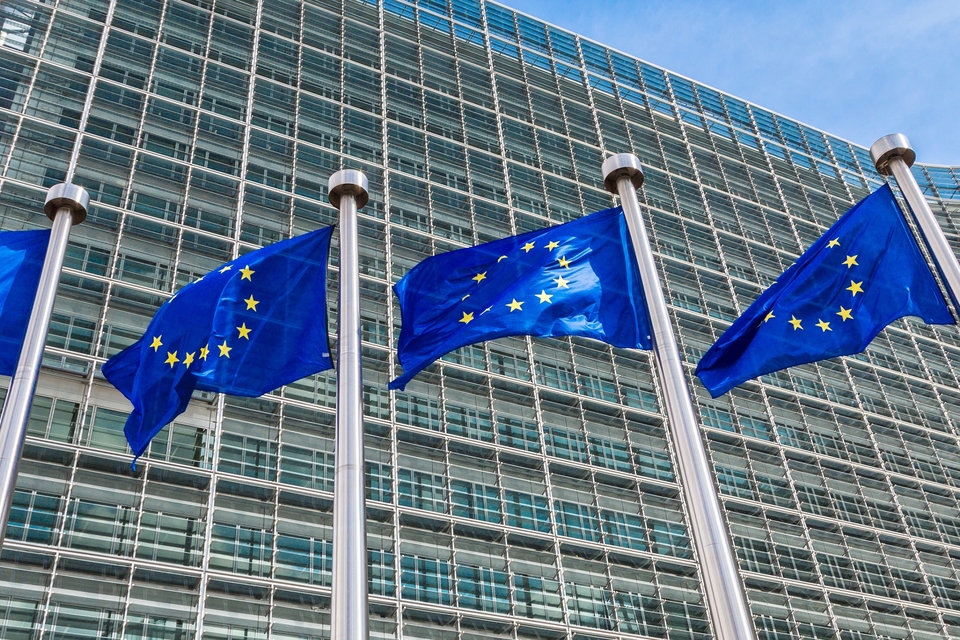Australia
Voluntary AI Ethics Principles guide responsible AI development in Australia, with potential reforms under consideration.

Artificial intelligence (AI) has made enormous strides in recent years and has increasingly moved into the public consciousness.
Explore Trendscape Our take on the interconnected global trends that are shaping the business climate for our clients.
Increases in computational power, coupled with advances in machine learning, have fueled the rapid rise of AI. This has brought enormous opportunities, as new AI applications have given rise to new ways of doing business. It has also brought potential risks, from unintended impacts on individuals (e.g., AI errors harming an individual's credit score or public reputation) to the risk of misuse of AI by malicious third parties (e.g., by manipulating AI systems to produce inaccurate or misleading output, or by using AI to create deepfakes).
Governments and regulatory bodies around the world have had to act quickly to try to ensure that their regulatory frameworks do not become obsolete. In addition, international organizations such as the G7, the UN, the Council of Europe and the OECD have responded to this technological shift by issuing their own AI frameworks. But they are all scrambling to stay abreast of technological developments, and already there are signs that emerging efforts to regulate AI will struggle to keep pace. In an effort to introduce some degree of international consensus, the UK government organized the first global AI Safety Summit in November 2023, with the aim of encouraging the safe and responsible development of AI around the world.
Most jurisdictions have sought to strike a balance between encouraging AI innovation and investment, while at the same time attempting to create rules to protect against possible harms. However, jurisdictions around the world have taken substantially different approaches to achieving these goals, which has in turn increased the risk that businesses face from a fragmented and inconsistent AI regulatory environment. Nevertheless, certain trends are becoming clearer at this stage:
Businesses in almost all sectors need to keep a close eye on these developments to ensure that they are aware of the AI regulations and forthcoming trends, in order to identify new opportunities and new potential business risks. But even at this early stage, the inconsistent approaches each jurisdiction has taken to the core questions of how to regulate AI is clear. As a result, it appears that international businesses may face substantially different AI regulatory compliance challenges in different parts of the world. To that end, this AI Tracker is designed to provide businesses with an understanding of the state of play of AI regulations in the core markets in which they operate. It provides analysis of the approach that each jurisdiction has taken to AI regulation and provides helpful commentary on the likely direction of travel.
Because global AI regulations remain in a constant state of flux, this AI Tracker will develop over time, adding updates and new jurisdictions when appropriate. Stay tuned, as we continue to provide insights to help businesses navigate these ever-evolving issues.
Voluntary AI Ethics Principles guide responsible AI development in Australia, with potential reforms under consideration.

The enactment of Brazil's proposed AI Regulation remains uncertain with compliance requirements pending review.

AIDA expected to regulate AI at the federal level in Canada but provincial legislatures have yet to be introduced.

The Interim AI Measures is China's first specific, administrative regulation on the management of generative AI services.

The Council of Europe is developing a new Convention on AI to safeguard human rights, democracy, and the rule of law in the digital space covering governance, accountability and risk assessment.

The successful implementation of the EU AI Act into national law is the primary focus for the Czech Republic, with its National AI Strategy being the main policy document.

The EU introduces the pioneering EU AI Act, aiming to become a global hub for human-centric, trustworthy AI.

France actively participates in international efforts and proposes sector-specific laws.

The G7's AI regulations mandate Member States' compliance with international human rights law and relevant international frameworks.

Germany evaluates AI-specific legislation needs and actively engages in international initiatives.

National frameworks inform India’s approach to AI regulation, with sector-specific initiatives in finance and health sectors.

Israel promotes responsible AI innovation through policy and sector-specific guidelines to address core issues and ethical principles.


Japan adopts a soft law approach to AI governance but lawmakers advance proposal for a hard law approach for certain harms.

Kenya's National AI Strategy and Code of Practice expected to set foundation of AI regulation once finalized.

Nigeria's draft National AI Policy underway and will pave the way for a comprehensive national AI strategy.

Position paper informs Norwegian approach to AI, with sector-specific legislative amendments to regulate developments in AI.

The OECD's AI recommendations encourage Member States to uphold principles of trustworthy AI.

Saudi Arabia is yet to enact AI Regulations, relying on guidelines to establish practice standards and general principles.

Singapore's AI frameworks guide AI ethical and governance principles, with existing sector-specific regulations addressing AI risks.

South Africa is yet to announce any AI regulation proposals but is in the process of obtaining inputs for a draft National AI plan.

South Korea's AI Act to act as a consolidated body of law governing AI once approved by the National Assembly.

Spain creates Europe's first AI supervisory agency and actively participates in EU AI Act negotiations.

Switzerland's National AI Strategy sets out guidelines for the use of AI, and aims to finalize an AI regulatory proposal in 2025.

Draft laws and guidelines are under consideration in Taiwan, with sector-specific initiatives already in place.

Turkey has published multiple guidelines on the use of AI in various sectors, with a bill for AI regulation now in the legislative process.

Mainland UAE has published an array of decrees and guidelines regarding regulation of AI, while the ADGM and DIFC free zones each rely on amendments to existing data protection laws to regulate AI.

The UK prioritizes a flexible framework over comprehensive regulation and emphasizes sector-specific laws.

The UN's new draft resolution on AI encourages Member States to implement national regulatory and governance approaches for a global consensus on safe, secure and trustworthy AI systems.

The US relies on existing federal laws and guidelines to regulate AI but aims to introduce AI legislation and a federal regulation authority.


The US relies on existing federal laws and guidelines to regulate AI but aims to introduce AI legislation and a federal regulation authority.
Currently, there is no comprehensive federal legislation or regulations in the US that regulate the development of AI or specifically prohibit or restrict their use. However, there are existing federal laws that concern AI albeit with limited application. A non-exhaustive list of key examples includes:
Nevertheless, various frameworks and guidelines exist to guide the regulation of AI, including:
On September 12, 2023, the US Senate held public hearings regarding AI8, which laid out potential forthcoming AI regulations. Possible legislation could include requiring licensing and creating a new federal regulatory agency. Additionally, US lawmakers held closed-door listening sessions with AI developers, technology leaders and civil society groups on September 13, 2023 in a continued push to understand and address AI.9
There are several federal proposed laws related to AI. A non-exhaustive list of key examples includes:
State legislatures have also introduced a substantial number of bills aimed at regulating AI, notably:
Existing legislation has been the primary way in which the US regulates AI as established law, including privacy and intellectual property laws, which are generally applicable to AI technologies.
Notably, in April 2023, the Federal Trade Commission, Equal Employment Opportunity Commission, Consumer Financial Protection Bureau, and Department of Justice issued a joint statement noting that "existing legal authorities apply to the use of automated systems and innovative new technologies."19 As cited above, in February 2024, the Federal Communications Commission applied restrictions in the Telephone Consumer Protection Act on AI-generated voices.
Several states have enacted comprehensive privacy legislation that can also regulate AI. A non-exhaustive list of notable state legislation includes:
Existing intellectual property laws also apply to AI, both with respect to the data AI technologies are trained upon and the outputs of such technologies. For example, with respect to outputs, the US District Court has held that human authorship is an essential part of a valid copyright claim, and the Copyright Office will refuse to register a work unless it was created by a human being."22 There are also numerous cases before the courts in the US alleging copyright infringement, among other things, with respect to training data.23
Several states have also issued executive orders regarding AI. Notably, in California, the Executive Order on Generative AI24 highlights the benefits of Generative AI, but also the need for safety instructing state agencies to examine how AI use for California residents may threaten privacy and security.
There is no single definition of AI.
The National Artificial Intelligence Initiative and White House Executive Order on AI define AI as "a machine-based system that can, for a given set of human-defined objectives, make predictions, recommendations, or decisions influencing real or virtual environments. Artificial intelligence systems use machine- and human-based inputs to perceive real and virtual environments; abstract such perceptions into models through analysis in an automated manner; and use model inference to formulate options for information or action."25
Many state privacy bills have different definitions of automated decision-making technology or "profiling":
As noted above, there are currently no comprehensive federal laws that have been enacted to specifically regulate AI. Accordingly, there is no specific territorial scope of federal legislation. However, many existing statutes regulate activities in which AI can be used, and those federal statutes typically apply nationally and, in some cases, extra-territorially. State legislation regulating AI generally has extra-territorial effect as its application typically extends to entities that target its residents from within or outside the state.
As noted above, there are currently no comprehensive federal laws that directly regulate AI. Accordingly, there is no specific federal sectoral scope at this stage. Nevertheless, there are certain sector-specific frameworks that have been implemented in the US to regulate the use of AI. A non-exhaustive list of key examples includes:
As noted above, there is currently no comprehensive federal legislation in the US that directly regulates AI. Accordingly, there are currently no specific or unique federal obligations imposed on developers, users, operators and/or deployers of AI systems. However, developers, users, operators and deployers of AI systems should anticipate that existing law will apply to any regulated activity that uses AI, and consult legal counsel about the potential liabilities that may arise. While potentially novel, the use of AI does not per se provide a shield from the application of existing law.
As noted above, there is currently no comprehensive legislation in the US that directly regulates AI. However, the White House Executive Order on AI and proposed legislation at the federal and state level generally seeks to address the following issues:
As noted above, there is currently no comprehensive legislation in the US that directly regulates AI. AI is also not generally classified according to risk in the relevant frameworks and principles.
As noted above, there is currently no comprehensive federal legislation in the US that directly regulates AI. Nevertheless, the White House Executive Order on AI lists the following eight key principles and priorities to encourage the responsible development of AI technologies and safeguard against potential harms:
Currently, there is no AI-specific federal regulator in the US. However, in April 2023, the Federal Trade Commission, Equal Employment Opportunity Commission, Consumer Financial Protection Bureau and Department of Justice issued a joint statement clarifying that their authority applies to "software and algorithmic processes, including AI."33
Similarly, state regulators that regulate privacy legislation likely also have the authority to regulate AI vis-à-vis existing privacy provisions. The FTC has been active in this area, and we can expect to see more from them going forward; see discussion of Rite Aid below.
As noted above, there are currently no comprehensive federal laws or regulations in the US that have been enacted specifically to regulate AI. As such, enforcement and penalties relating to the creation, dissemination and/or use of AI are governed by application of existing law to situations involving AI, through regulatory or judicial application of non-AI-specific federal and state statutes or AI-specific state privacy legislation.
In addition, the Federal Trade Commission has evoked an interest in and focus on regulating AI through enforcement. On December 19, 2023, the FTC settled a significant action focused on artificial intelligence bias and discrimination against Rite Aid regarding the company’s use of facial recognition technology for retail theft deterrence.34 This illustrative case provides guidance on the FTC’s enforcement on AI systems. For example, the proposed consent order35 between Rite Aid and the FTC:
Further insights from White & Case:
1 https://www.congress.gov/bill/115th-congress/house-bill/302
2 https://www.congress.gov/bill/115th-congress/house-bill/5515
3 https://www.congress.gov/116/crpt/hrpt617/CRPT-116hrpt617.pdf#page=1210; https://trumpwhitehouse.archives.gov/briefings-statements/white-house-launches-national-artificial-intelligence-initiative-office/
4 https://www.federalregister.gov/documents/2023/11/01/2023-24283/safe-secure-and-trustworthy-development-and-use-of-artificial-intelligence
5 https://www.whitehouse.gov/ostp/ai-bill-of-rights/
6 https://www.whitehouse.gov/briefing-room/statements-releases/2023/07/21/fact-sheet-biden-harris-administration-secures-voluntary-commitments-from-leading-artificial-intelligence-companies-to-manage-the-risks-posed-by-ai
7 https://docs.fcc.gov/public/attachments/FCC-24-17A1.pdf
8 https://www.commerce.senate.gov/2023/9/the-need-for-transparency-in-artificial-intelligence
9 https://iapp.org/news/a/dual-us-senate-hearings-continue-work-toward-ai-regulation
10 https://www.democrats.senate.gov/imo/media/doc/schumer_ai_framework.pdf
11 https://www.congress.gov/bill/118th-congress/senate-bill/1596/text
12 https://www.congress.gov/bill/118th-congress/senate-bill/262/text
13 https://www.coons.senate.gov/imo/media/doc/no_fakes_act_one_pager.pdf ; and https://www.coons.senate.gov/imo/media/doc/no_fakes_act_draft_text.pdf
14 https://www.congress.gov/bill/118th-congress/senate-bill/3312/text
15 https://leginfo.legislature.ca.gov/faces/codes_displayText.xhtml?division=3.&part=4.&lawCode=CIV&title=1.81.5
16 https://cppa.ca.gov/meetings/materials/20231208_item2_draft.pdf
17 https://www.cga.ct.gov/2023/act/Pa/pdf/2023PA-00016-R00SB-01103-PA.PDF
18 https://capitol.texas.gov/tlodocs/88R/billtext/html/HB02060F.htm
19 https://www.ftc.gov/system/files/ftc_gov/pdf/EEOC-CRT-FTC-CFPB-AI-Joint-Statement%28final%29.pdf
20 https://leginfo.legislature.ca.gov/faces/codes_displayText.xhtml?division=3.&part=4.&lawCode=CIV&title=1.81.5
21 https://www.ilga.gov/legislation/ilcs/ilcs3.asp?ActID=3004&ChapterID=57
22 https://cdn.patentlyo.com/media/2023/08/THALER-v.-PERLMUTTER-et-al-Docket-No.-1_22-cv-01564-D.D.C.-Jun-02-2022-Court-Docket-1.pdf
23 https://www.bloomberglaw.com/document/X1Q6OLFCFC82
24 https://www.gov.ca.gov/wp-content/uploads/2023/09/AI-EO-No.12-_-GGN-Signed.pdf
25 https://www.govinfo.gov/content/pkg/USCODE-2022-title15/pdf/USCODE-2022-title15-chap119-sec9401.pdf ; and https://www.federalregister.gov/documents/2023/11/01/2023-24283/safe-secure-and-trustworthy-development-and-use-of-artificial-intelligence
26 https://capitol.texas.gov/tlodocs/88R/billtext/html/HB02060F.htm
White & Case means the international legal practice comprising White & Case LLP, a New York State registered limited liability partnership, White & Case LLP, a limited liability partnership incorporated under English law and all other affiliated partnerships, companies and entities.
This article is prepared for the general information of interested persons. It is not, and does not attempt to be, comprehensive in nature. Due to the general nature of its content, it should not be regarded as legal advice.
© 2024 White & Case LLP